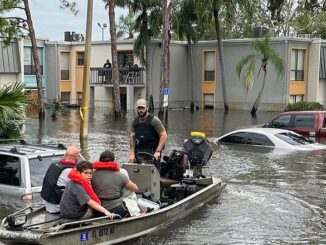
CALI, Colombia, October 25, 2024 (ENS) – The world’s most important event to conserve biodiversity, the United Nations biodiversity summit known as COP16, officially opened in Colombia on Monday, and hopes are high that the negotiating countries can find a way to safeguard the vast variety of life forms on Earth.
In Cali, Colombia’s third largest city, the UN is hosting some 15,000 attendees, including a dozen Heads of State, 103 ministers and over 1,000 international journalists.
Gustavo Petro, President of Colombia, called for a “global revolution” for humanity and life. Pathways toward this revolution require decarbonization, different economic and financial arrangements, and reducing inequitable debt through “debt for climate action,” he said.
Welcoming the delegates, Astrid Schomaker of Germany, executive secretary of the Convention on Biological Diversity, called Colombia, on South America’s northwest coast, “one of the most biodiversity-rich countries on our planet.”
Among the important steps that must be taken at this meeting, Schomaker said, four issues stand out to her:
- The alignment of national planning with the Kunming-Montreal Global Biodiversity Framework, and the yardsticks that will be used to measure progress against its 23 targets. To download the official text of the Kunming-Montreal Global Biodiversity Framework, click here.
- The recognition of the role of indigenous peoples and local communities in the institutional functioning of the Convention on Biological Diversity.
- Resource mobilization and the pressing need for progress on financial means of implementation.
- The operationalization of the multilateral mechanism on digital sequence information on genetic resources, including a global fund.
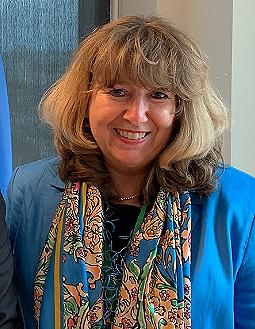
Delegates at COP16, formally called the 16th Conference of Parties to the UN Biodiversity Convention, are discussing how to restore rapidly degrading lands and seas in a way that protects the planet and respects the rights of indigenous peoples and local communities.
Aiming to promote international cooperation, agree on investments to protect ecosystems and strengthen global environmental policies, COP16 takes as its roadmap the Kunming-Montreal Biodiversity Framework (GBF), the plan adopted at COP15 in Montreal, Canada in December 2022 to halt and reverse the loss of biodiversity by 2030.
A key goal of the Cali meeting will be to fully implement the “30 by 30 Kunming-Montreal pledge” to protect 30 percent of the planet’s lands and inland waters, as well as 30 percent of marine and coastal areas, by 2030.
“The diversity of species keeps the global ecosystem in balance, providing everything in nature that we, as humans, need to survive, including food, clean water, medicine and shelter. Biodiversity is also our strongest natural defense against climate change. Land and ocean ecosystems act as carbon sinks, absorbing more than half of all carbon emissions,” according to UN biodiversity experts.
COP 15 President Huang Runqiu, Minister of Ecology and Environment of China, noted the COP 16 theme of peace with nature aligns with that of COP 15, “ecological civilization.”
Upholding Human Rights Essential to Biodiversity Protection
Ten days ago, just ahead of COP 16 in Cali, UN experts and an expert from the Inter-American Commission on Human Rights, IACHR, called on countries to mainstream human rights, including the human right to a clean, healthy and sustainable environment, into the decisions and outcomes and implementation of COP 16 at all levels.
The experts said in a statement, “Human rights should be at the centre of all actions to address the triple planetary crisis – climate change, biodiversity loss and toxic pollution – and advance coherent and ambitious actions to urgently achieve effective solutions. These efforts should respect, protect and fulfil human rights.”
The experts’ statement originated with the Special Rapporteurship on Economic, Social, Cultural, and Environmental Rights, which is headed by Special Rapporteur Javier Palummo Lantes of Uruguay, a lawyer and human rights expert who is currently vice-president of the Advisory Committee of the UN Human Rights Council.
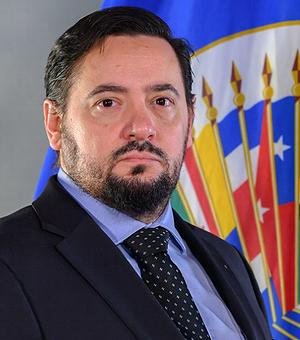
The commitment to apply a human rights-approach, with specific references to everyone’s human right to a healthy environment, and, specifically, Indigenous Peoples’ human rights, is written into the Kunming-Montreal Global Biodiversity Framework, adopted in 2022 by the 196 Parties to the Convention on Biodiversity, the UN experts explained.
This commitment to uphold human rights applies to the implementation of National Biodiversity Strategies and Action Plans under the Convention on Biodiversity.
It also applies to the Framework’s goals and targets, such as Target 3 to conserve 30 percent of land, waters and seas by 2030, and Target 22 to ensure participation for all in decision-making and access to justice and information related to biodiversity.
“The dire impacts of the triple planetary crisis are evident,” the UN experts emphasized, warning, “Marginalised people, groups and communities who have contributed the least are the ones who suffer the most – which is evidence of profound inequalities.”
“The respect, protection and guarantee of human rights should inform both process and outcomes. This extends to decisions that may be adopted at COP16, and the implementation of the Kunming-Montreal Global Biodiversity Framework,” they said.
“COP16 is therefore an opportunity for advancing a whole-of-society approach to the implementation of the Framework,” the UN experts concluded.
“Implementation should involve the whole of society with an intersectional approach, that guarantees the inclusion and effective participation of all, especially women, children, youth, Indigenous Peoples, people of African descent, peasants and other rural communities,” they said.
Links With Other Treaties Now in the Works
The UN experts explained how decisions taken regarding biodiversity at COP16 in Cali are linked with other environmental concerns and negotiations now underway.
“A human rights-approach helps to drive the necessary deep and systemic changes, including the reduction of unsustainable production and overconsumption across sectors and ecosystems, and to identify holistic, fair and effective solutions,” they explained.
Mainstreaming human rights will help to clarify the role of public and private actors in the implementation of the Convention, the Global Biodiversity Framework and COP decisions, “especially at the ocean-climate-biodiversity nexus,” the UN experts said.
“This is particularly important now that the International Tribunal for the Law of the Sea has further clarified the strict due diligence obligations of countries to mitigate and adapt to climate change by regulating and controlling activities carried out by both public and private actors that may impact the marine environment,” they said.
In June 2023, the adoption by governments of the Biodiversity Beyond National Jurisdiction, BBNJ, Agreement signified a tidal shift, not only for ocean governance on the high seas, but also for biodiversity conservation.
With the expectation that the implementation of the Kunming-Montreal Global Biodiversity Framework and ratification of the BBNJ Agreement will soon be completed, stakeholders are becoming more aware of the opportunities and challenges that it may bring.
A side event in Cali considered how the BBNJ Agreement can work in synergy with efforts undertaken by the Convention on Biological Diversity.
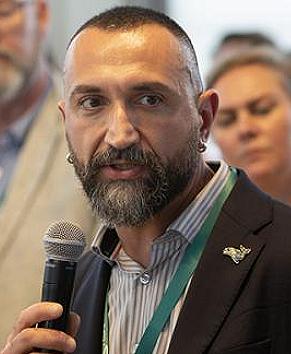
At the side event, Fariz Ahmadov, Fisheries and Oceans Canada, said the negotiations of the BBNJ Agreement and the GBF overlap, and that synergies have been present from the beginning. He said the BBNJ Agreement is integral to implementation of the GBF, and that capacity needs under both cannot be separated. He encouraged the involvement of more regional conventions for their contribution to strengthening both the CBD and the BBNJ Agreement.
Vera Agostini, deputy director of the Fisheries and Aquaculture Division, Food and Agriculture Organization of the UN, said that both the GBF and BBNJ Agreement “require a whole-of-society approach.” She views common information needs in fisheries as an opportunity for cooperation between the two frameworks.
Everett Sioa, with the Secretariat of the Pacific Regional Environment Programme, said that coordinated regional efforts are vital because marine ecosystems are connected, so transboundary linkages extend beyond national jurisdiction.
Chizuru Aok works with the Global Environment Facility, GEF, a multilateral family of funds dedicated to confronting biodiversity loss, climate change, and pollution, and supporting land and ocean health. In Cali, Aok told delegates that US$34 million has been authorized for early ratification of the BBNJ Agreement, and that countries are encouraged to reach out to the GEF for ratification and implementation support.
She explained that finance can be an integrator, facilitator, and catalyst for cross-cutting elements for the CBD and BBNJ Agreement. Over the past three decades, the GEF has provided more than US$25 billion in financing and mobilized $145 billion for country-driven priority projects.
Colombia’s Beauty Inspires Action to Ward Off Threats
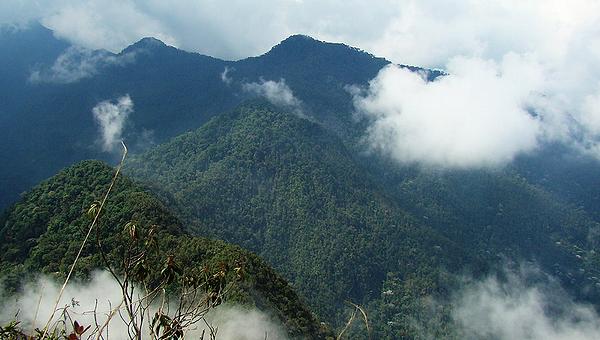
The first global gathering on biodiversity since 2022, when countries agreed on the historic Global Biodiversity Framework, COP16 will run until November 1 in Cali, a city of 2.5 million inhabitants in southwestern Colombia, surrounded by the peaks of the Andes Mountains.
Inhabited by more than 1,000 species of birds, 4,000 species of orchids, and with 53 percent of its territory covered by forests, Colombia’s selection as the country to host COP16 highlights the importance of the region in the global biodiversity agenda and the fundamental role it plays in the protection of ecosystems.
In the Colombian Andes, less than a third of original ecosystems remain, but these forested slopes provide much of the water used by 70 percent of Colombia’s population.
Farallones de Cali National Park, located on the Pacific coast, is expected to conduct a habitat restoration project to heal the damage from illegal gold mining, Colombia’s Ministry of Environment and Sustainable Development announced last December. The restoration follows law enforcement operations to remove the criminals who stole the gold.
Throughout the world, deforestation has led to soil erosion and siltation that generate major challenges for agriculture and industry, according to the Trillion Trees organization, formed in 2016 by three of the world’s largest and best-established conservation organizations: BirdLife International, Wildlife Conservation Society and WWF to restore forests across the globe.
Trillion Trees, based in London, England, works closely with the Coalition for Private Investment in Conservation, the UN Food and Agriculture Organization, the Aga Khan Development Network, Nature4Climate, and the Global Returns Project.
Trillion Trees also works with with 1t.org, the global platform for the trillion trees community hosted by the World Economic Forum. 1t.org mobilizes private sector investment into forest conservation and restoration, facilitates multi-stakeholder dialogue, and supports innovation and restoration entrepreneurs who are ready to scale.
Colombia is considered one of the most biodiverse countries in the world, according to the assessment of the Convention on Biological Diversity.
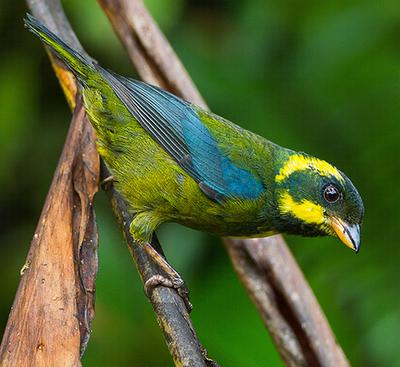
Colombia is listed as one of the world’s “megadiverse” countries, hosting close to 10 percent of the planet’s biodiversity. Worldwide, it ranks first in bird and orchid species diversity and second in plants, butterflies, freshwater fishes and amphibians.
With 314 types of ecosystems, Colombia possesses a rich complexity of ecological, climatic, biological and ecosystem components. Colombia was ranked as one of the world’s richest countries in aquatic resources, as the country’s large watersheds feed into the four massive sub-continental basins of the Amazon, the Orinoco, Caribbean, Magdalena-Cauca, and the Pacific.
Colombia has several areas of high biological diversity in the Andean ecosystems, with a wide variety of endemic species, found nowhere else on Earth, as well as the Amazon rainforests and unique humid ecosystems.
But to further agricultural development, these natural ecosystems have been transformed. Almost 95 percent of the country’s dry forests have been reduced from their original extent, including close to 70 percent of typically Andean forests.
UN Chief: ‘We Have a Plan’
During the COP 16 summit’s opening ceremony on October 20, UN Secretary-General António Guterres urged delegations to “make peace with nature” and shore up plans to stop habitat loss, save endangered species, and preserve our planet’s precious ecosystems.
The UN chief’s call came in a video message to the opening ceremony. “The framework is grounded in a clear truth – for humanity to survive, nature must flourish…it promises to reset relations with Earth and its ecosystems,” the Secretary-General said.
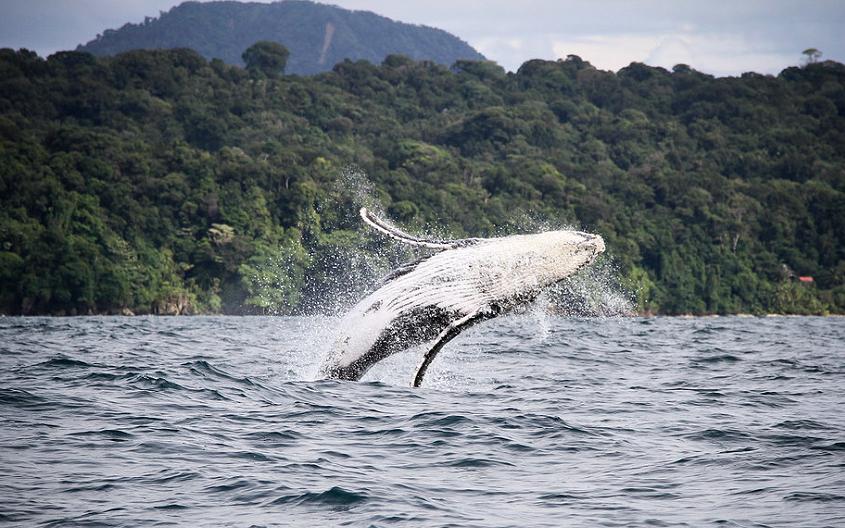
Guterres emphasized that delegations must leave Cali with significant investments in the Global Biodiversity Framework, its related funds and commitments to mobilize other sources of public and private finance to deliver on its goals in full.
“We have a plan to rescue humanity from a degraded Earth,” the Secretary-General said, adding that he looks forward to seeing delegates in person at the end of the COP “to hear how you have delivered.”
The Minister of Environment in Colombia, and President of COP16, Susana Muhamad, told the delegates, “Colombia has become the epicentre of global climate action, uniting leaders and experts to address the greatest challenge of our era: protecting our planet and ensure a sustainable future.”
“Understanding that if we safeguard all forms of life, we are safeguarding ourselves, we erect a principle of peace with nature, which also means the search for peace among the villages,” she said.
Colombia’s former environmental minister, Manuel Rodríguez Becerra, now professor emeritas at the University of the Andes, says that one of the main challenges is to ensure that countries make more significant progress on their biodiversity action plans.
“Only 20 percent of countries have presented these national plans two years after COP15, where this global framework was agreed. We hope that, during COP16 in Cali, many countries will present their national plans or will be very ready,” he told UN News. “There is still a fallacy that we must recognize – and that is why it is so important that progress is made in the monitoring system to follow through on achieving the goals that have been set.”
Featured image: From left: Gustavo Petro, President of Colombia; Francia Márquez, Vice President of Colombia; Huang Runqiu, Minister of Ecology and Environment of China and President of COP 15; and Susana Muhamad, Minister of Environment and Sustainable Development, Colombia. October 20, 2024, COP 16 Cali, Colombia (Photo courtesy IISD/ENB)
Earth Negotiations Bulletin contributed reporting.


